MileValue is part of an affiliate sales network and receives compensation for sending traffic to partner sites, such as CreditCards.com. This compensation may impact how and where links appear on this site. This site does not include all financial companies or all available financial offers. Terms apply to American Express benefits and offers. Enrollment may be required for select American Express benefits and offers. Visit americanexpress.com to learn more.
Note: Some of the offers mentioned below may have changed or are no longer be available. You can view current offers here.
At the conclusion of June I rented a car and drove south down the Adriatic coast of Italy. In English, the region I explored is called Apulia, also known as Puglia.
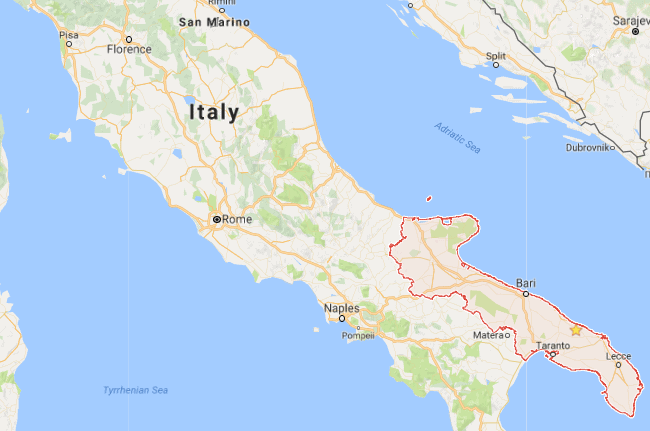
I started traveling around Europe in late May and had plans through mid June that took me from Spain, to Portugal, Ireland, and then finally Rome. I asked your advice for a two week hole in my agenda after Rome and before Norway, and those of you that mentioned Italy recommended the Amalfi coast and/or Cinque Terre. While both look beautiful and are places I plan on visiting in the future, I ultimately chose Puglia because of a tip from a friend who had visited very recently. She said Puglia was on the brink of becoming a much bigger tourist destination but still erred on the side of “off the beaten path”. And she was right. Go, and go soon. It’s popular with Italians but I encountered just a handful of international tourists along my journey.
The region’s white washed ancient architecture, sprawling groves of olive trees dotted with repurposed farm houses, cliff and rock formations, sandy white beaches, and abundant produce alchemize to form a truly enchanting atmosphere. And since tourism, at least on an international level, hasn’t totally blown up yet, many things are still relatively cheap compared to other Italian hotspots.
I’ve got a lot to say and show so I’m splitting the trip report into three posts.
- Trip Report: Puglia (Apulia) Italy Part I (this post)
- Trip Report: Puglia (Apulia) Italy Part II
- Trip Report: Puglia (Apulia) Italy Part III
In a perfect world the road trip would’ve started in Bari, but my train from Rome to Pescara broke down multiple times which caused me to miss my connecting train from Pescara to Bari. I could’ve taken another train from Pescara to Bari, but already delayed a day I was feeling antsy and wanted control over my own agenda as I had just eight days before I had to catch a ferry to Dubrovnik, Croatia from Bari. So I moved forward with renting a car and headed to my first stop, Polignano a Mare.
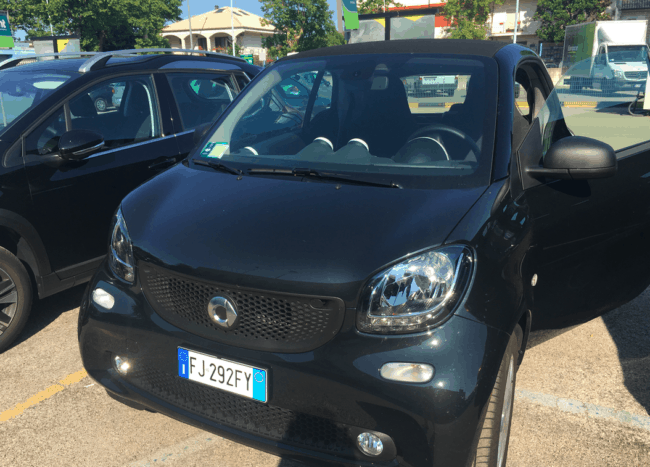
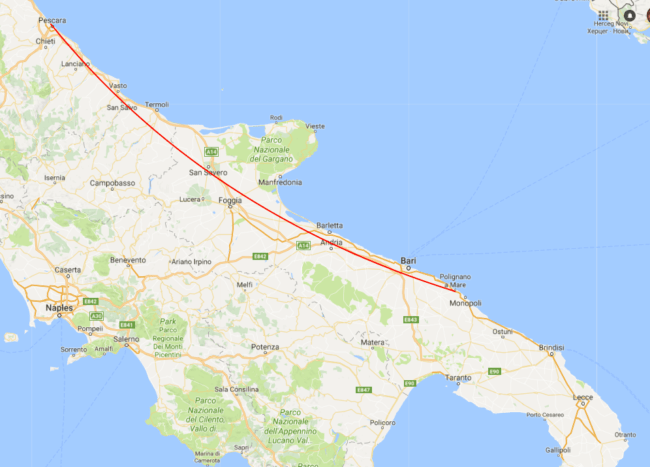
I didn’t stop anywhere between Pescara and Polignano a Mare, so I’ll show you a detailed map of my route, as the crow flies, starting in Polignano a Mare.
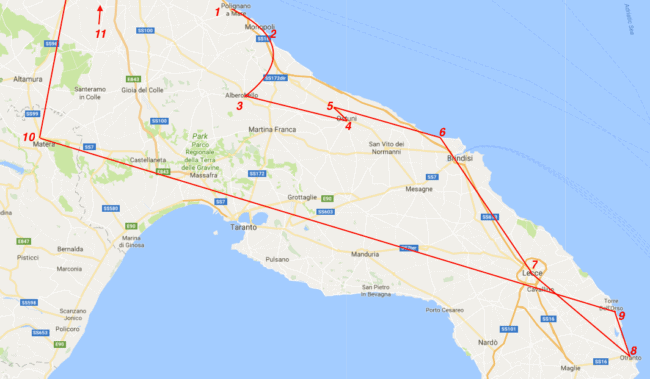
Here were my stops in chronological order:
- Polignano a Mare
- Spiaggia di Porto Verde (outside of Monopoli)
- Alberobello
- Ostuni
- Masseria il Frantoi (outside of Ostuni)
- Torre Guaceto
- Lecce
- Otranto
- Torre Sant’Andrea
- Matera
- Bari, my departure point
While I obviously didn’t sleep in all of those places as the entire road trip was eight days long, I spent a significant amount of time in each whether it was for a meal, a swim, or a walk around to admire old buildings and churches.
Polignano a Mare
Polignano a Mare is a half hour drive or 1.5 hour train ride from Bari, Italy.
If you decide to visit Puglia and you’re coming from the United States you can fly into Bari pretty easily. Alitalia and some low cost carriers fly there year round and seasonally the airport is served by oneworld, Skyteam, and Star Alliance partners.
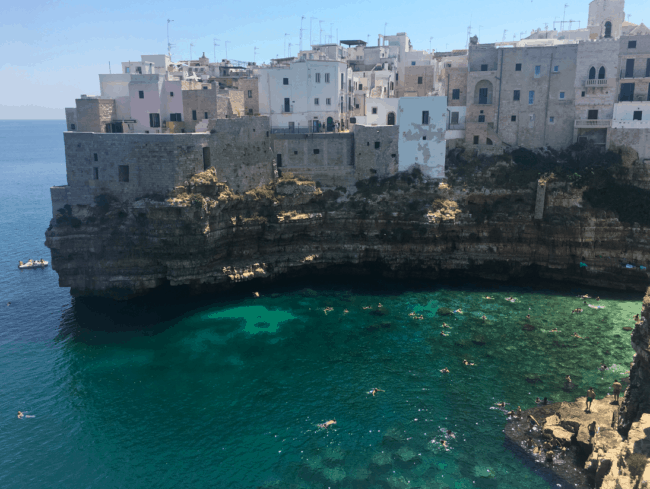
The picture above is one of the more famous views of the old town that surely will pop up all over your search results if you Google Image search Polignano a Mare. Understandably so. The center of the town is this pebbly beach, framed by the old town perched atop a limestone cliff.
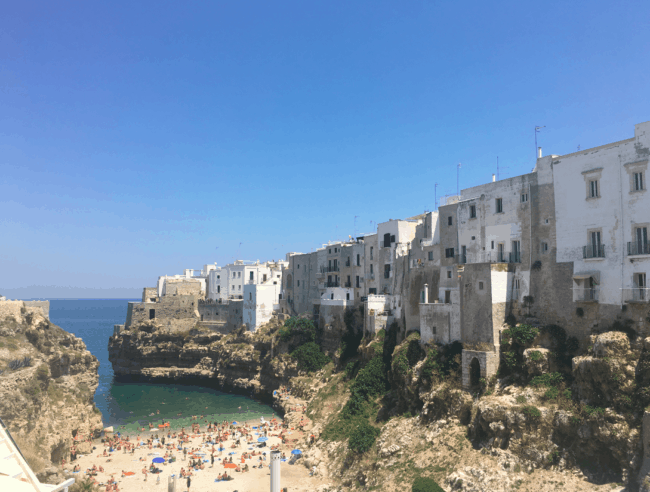
The little beach gets crowded in the middle of the day, of course. It’s best for a dip in the early morning or once the sun’s making its way down.
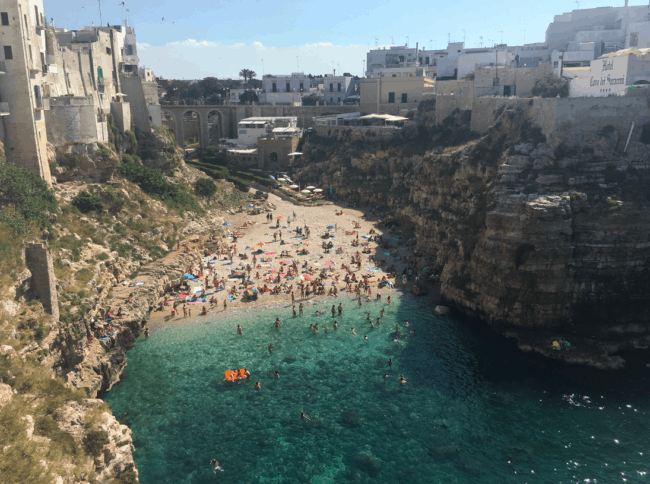
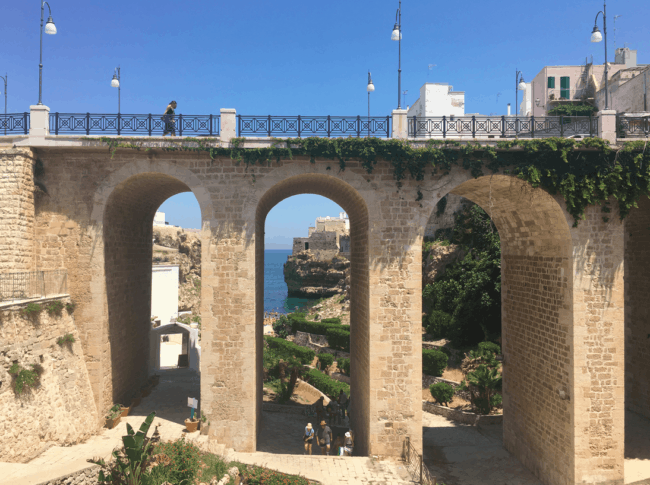
The old town has a distinctly Mediterranean vibe, the buildings ranging from white to beige but not leaving that color family.

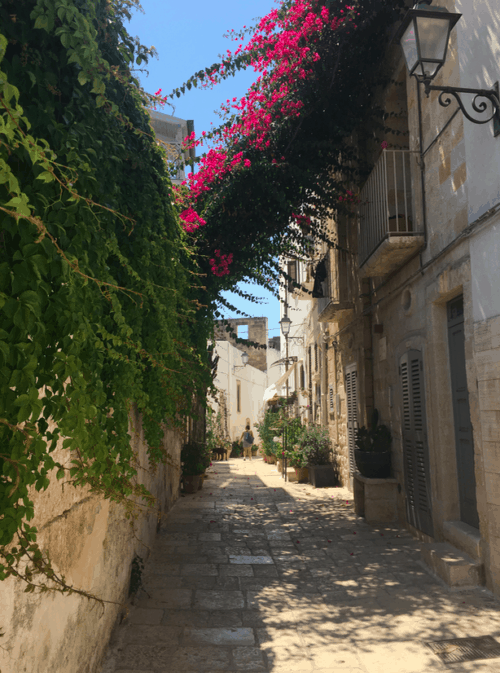
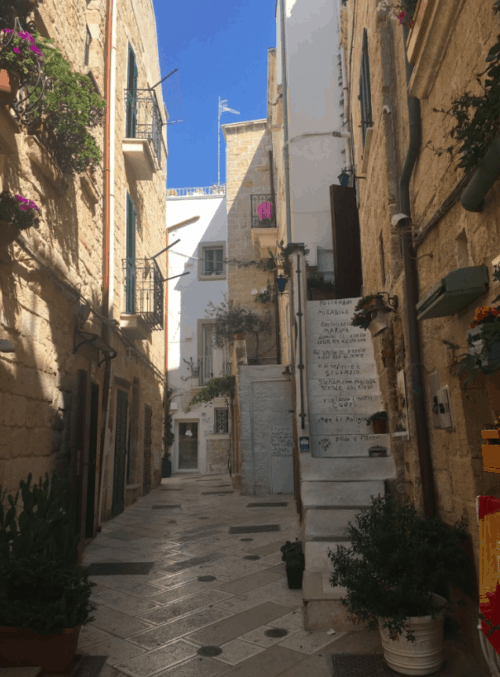
If you’re not renting a car, the old town is the place to stay. It is by far the quaintest and where you’re going to want to hang out/wander around/eat. I opted out of the old town and for a place a 15 minute walk away for ease of parking–an apartment through booking.com which is my go-to for last minute accommodation when Airbnb’s a bust.
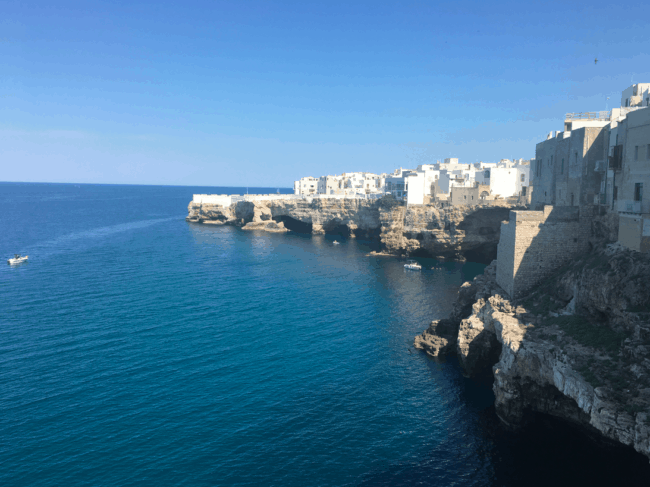
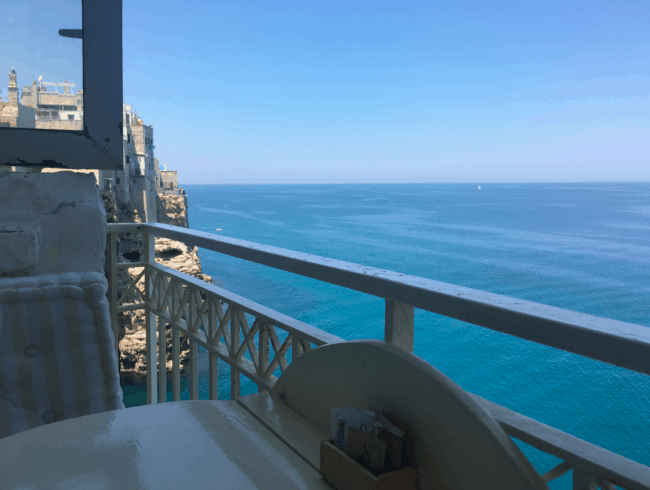
If you’re lucky you might see 25 Ferraris roll down the street for no apparent reason other than fanfare ?
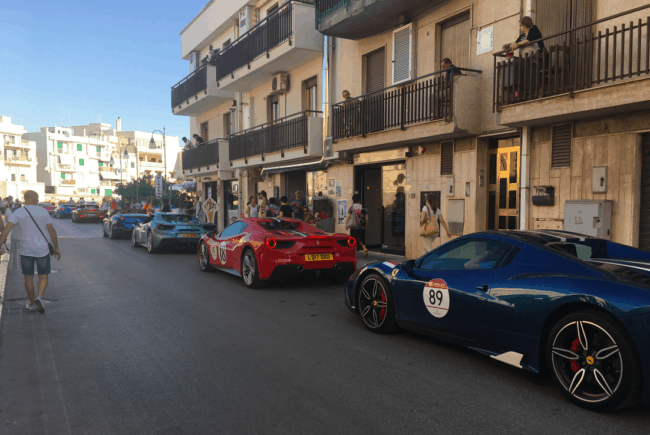
If I had stuck around longer, I could’ve caught a Red Bull Cliff Diving Competition, which now happens annually in the small town.
Standout Eating
Il Supermago del Gelo is hands down, no contest, the best gelato I tried in all of Italy. That’s saying a lot considering I ate gelato almost every day in different locations for two weeks.
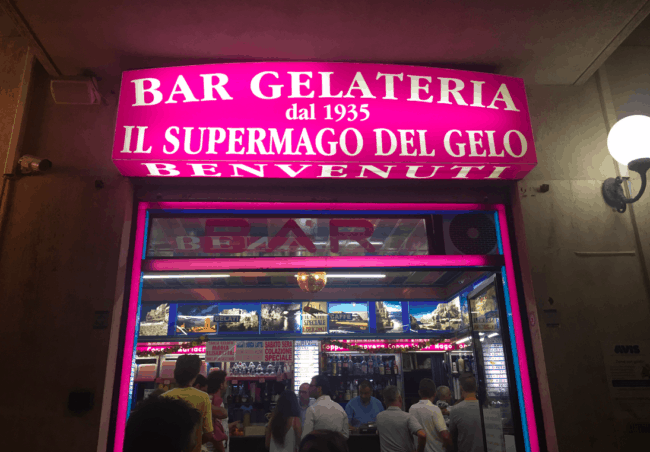
While not traditional Italian, I thoroughly enjoyed Pescaria, a seafood centric restaurant with a large menu featuring all kind of seafood served in different forms–raw, ceviche’d, tartare’d, cooked–served a la carte, in sandwiches, salads, as appetizers, etc. It was easy to eat healthy at Pescaria. Whatever white wine I had there was also top notch and the prices were decent.
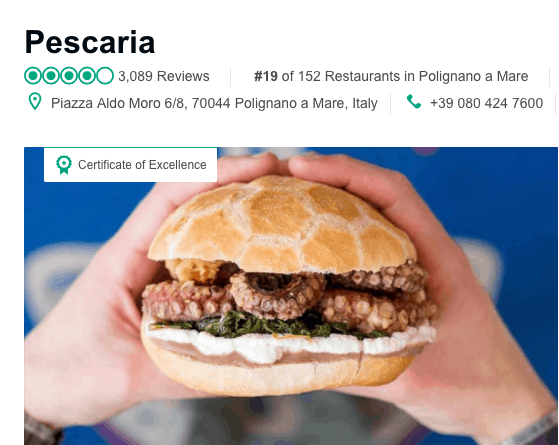
Spiaggia di Porto Verde (Outside of Monopoli)
After Polignano a Mare I headed towards Alberobello, but on the way decided to stop for a swim. It was blistering hot during this trip (thanks to multiple heat waves that hit Europe this summer), so swimming was a priority.
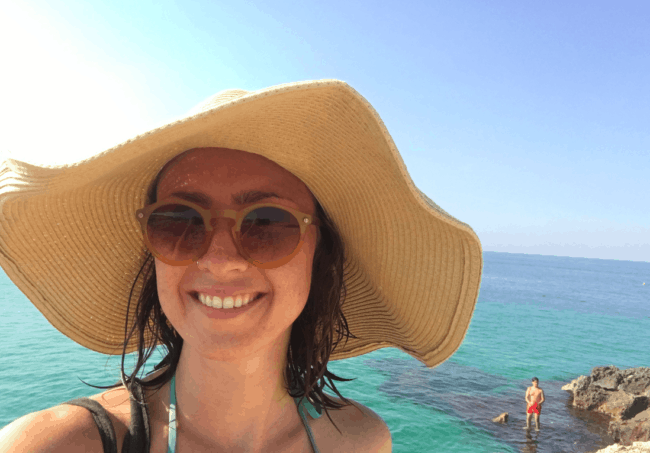
Spiaggia is Italian for beach. Spiaggia de Porto Verde, on the fringes of Monopoli, is a tiny beach but is surrounded by caves, cliffs, and rocks you can sit on. Instead of stuffing myself into the crowded beach, I found a spot on the rocks to lay my blanket and jumped from the rocks to swim.

The city on the left of the panorama is Monopoli. You can’t tell from the picture but the skyline of old domes and churches was gorgeous. And really, can you beat those blues? All of these photos are straight from my iPhone, no editing or filters applied.
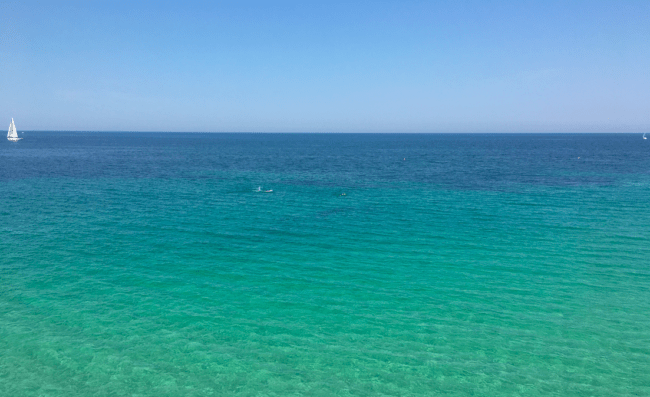
There are so many stops you can make like this along the southern coast of Italy, Spiaggia de Porto Verde is just one little example.
Alberobello
Alberobello, a UNESCO World Heritage site, is an absolute must see if traveling to Puglia.
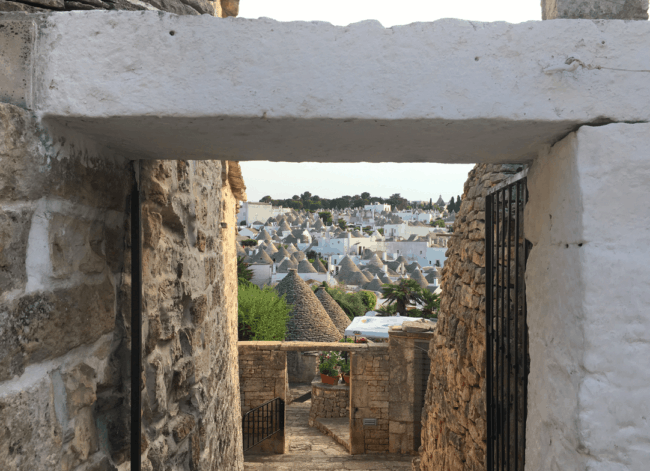
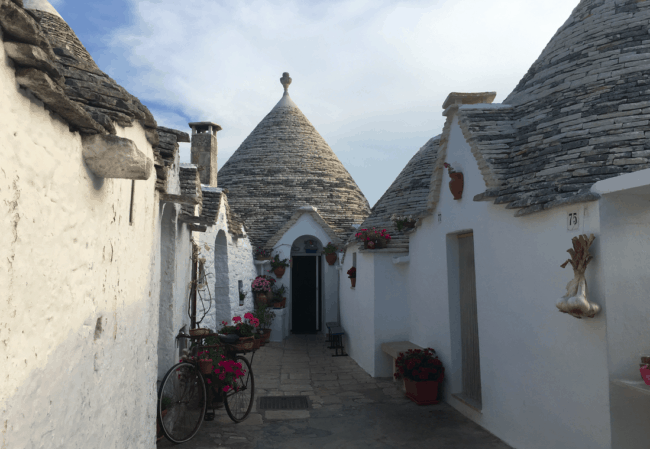
Built in the 14th century, the cone shaped trulli houses are made of limestone. There are two zones in the town where the trulli are concentrated, but you’ll spot them occasionally in various places around Puglia. Driving into the rolling hills surrounding Alberobello (coming from Monopli) was an experience in itself as the unique trulli start to pop up amongst the olive groves, vineyards, and bales of hay. 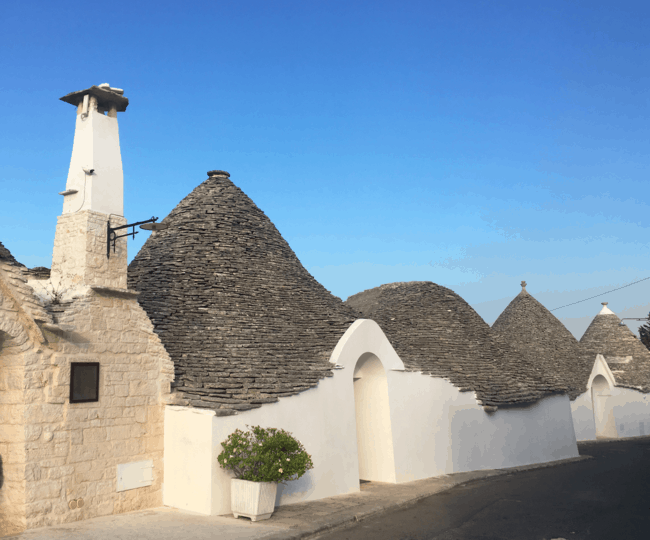
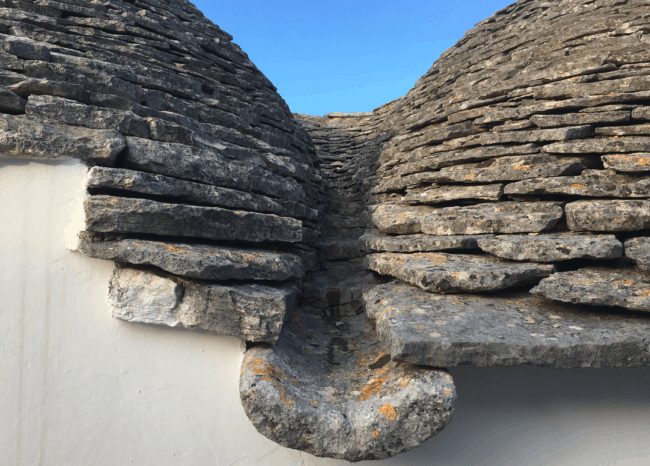
Standout Eating
After walking around the trulli zone at dusk, I ate dinner at a place called L’Aratro.
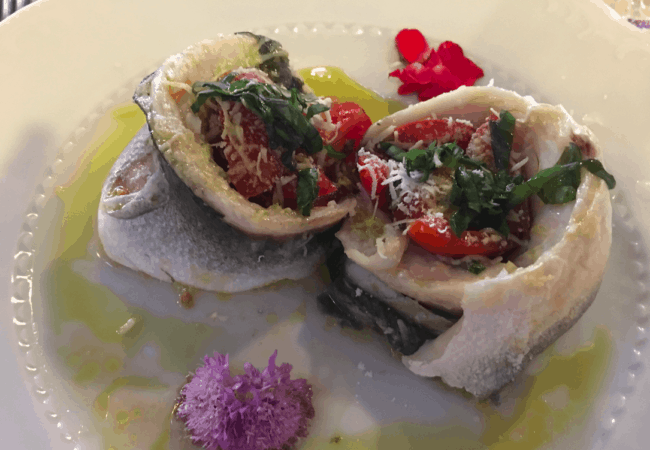
The food was great and the service even more impressive.
The chef served me personally and was quite kind, bringing me a catch of the day supposed to be for two portioned for one. It was a local fish I can’t remember the name of stuffed with tomatoes, basil, and parmesan and drizzled with olive oil. He also brought out a selection of a few artichoke, zucchini, and eggplant tempura as a gift when I first expressed interest in the appetizer but declined due to the portion size. It can be hard ordering for one. I appreciate it so much when restaurants make concessions for solo diners.
Ostuni
Another place that makes an impression on the drive in is Ostuni. The old town of Ostuni is a citadel resting on a hill, surrounded by white walls. Almost all of buildings in the old town are white (or in that white to beige range like in the old town of Polignano a Mare), earning it the name of La Città Bianca (the White Town) in Italian. I didn’t take pictures driving into the Ostuni as it was night when I arrived, so I’ll borrow one to give you an idea.
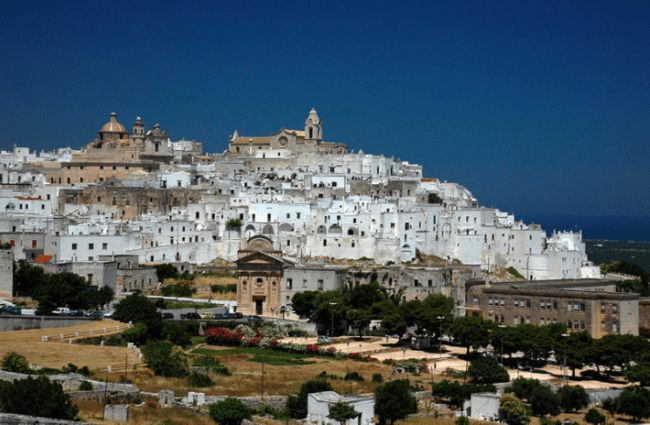
In fact, I did a horrible job of taking photos in Ostuni as I was so taken with a masseria right outside the old town’s borders that I ended up spending the majority of my time in the area there (covered in Part II of the trip report).
The charming old town’s winding white alleys are chock full of ancient churches with bells ringing all hours of the day. I wish I had taken more pictures of it–thankfully others have.
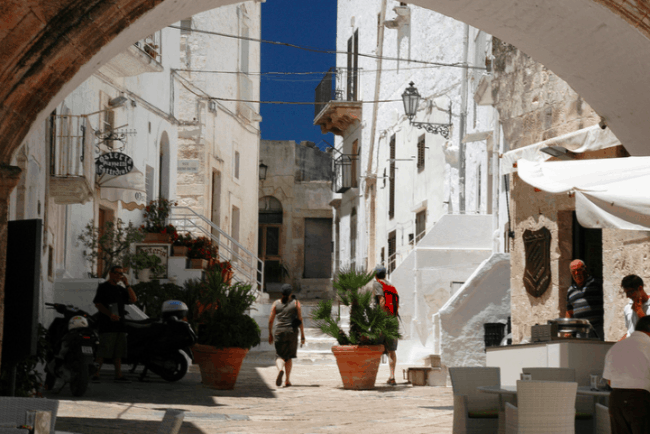
Here’s the one photo I actually took inside the old town walls of Ostuni. I have soft spot for beautiful doors.
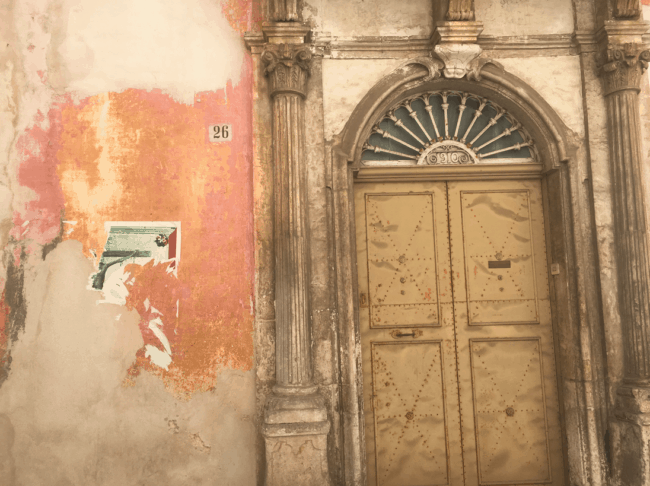
Ostuni is a quick drive inland from various long, sandy beaches, but a warning for nature lovers: these beaches are full of Italians in the summer. From what I saw the best beach in the area is the natural reserve around Torre Guaceto about a 30 minute drive east of Ostuni,which I’ll cover in Part II.
Standout Eating
While the name of Coffee & More leads you to believe that it’s a cafe, don’t be fooled. The menu is expansive and is full of huge, fresh salads, sandwiches… and more.
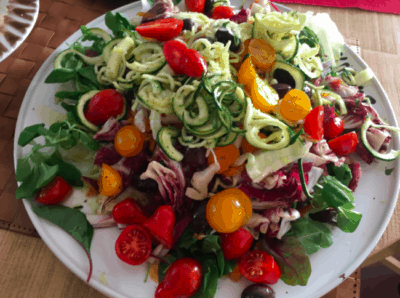
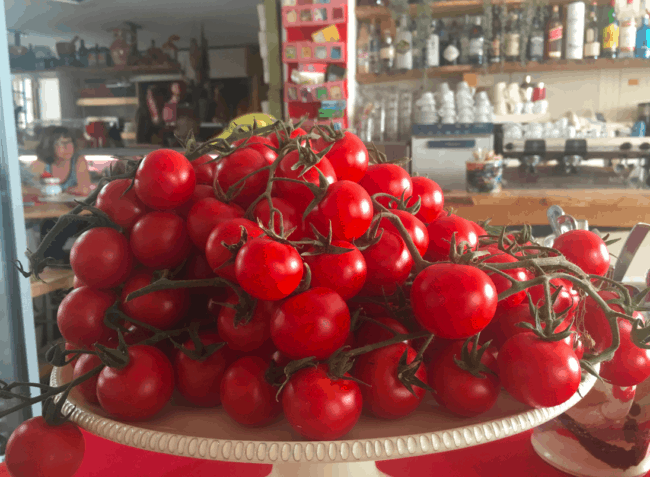
And yes, Italian tomatoes are all they’re cracked up to be.
Coming up in Trip Report: Puglia (Apulia), Italy Part II
I’ll cover the second portion of my trip which I spent in/around..
- Masseria il Frantoi (right outside of Ostuni), a farmhouse and farm from the 16th century refurbished with a breathtaking boutique hotel and to die for restaurant
- Torre Guaceto, a nature reserve with sandy white beaches, turquoise waters, and far less people than any other beach in the area
- Lecce, the capital of the Lecce Province with awe-inspiring baroque architecture upon every turn
Stay tuned!
Just getting started in the world of points and miles? The Chase Sapphire Preferred is the best card for you to start with.
With a bonus of 60,000 points after $4,000 spend in the first 3 months, 5x points on travel booked through the Chase Travel Portal and 3x points on restaurants, streaming services, and online groceries (excluding Target, Walmart, and wholesale clubs), this card truly cannot be beat for getting started!
Editorial Disclaimer: The editorial content is not provided or commissioned by the credit card issuers. Opinions expressed here are the author’s alone, not those of the credit card issuers, and have not been reviewed, approved or otherwise endorsed by the credit card issuers.
The comments section below is not provided or commissioned by the bank advertiser. Responses have not been reviewed, approved, or otherwise endorsed by the bank advertiser. It is not the bank advertiser’s responsibility to ensure all questions are answered.


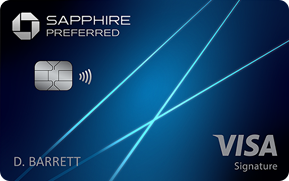
Enchanting, simply enchanting. Thank you for posting, brave young lady. Have done a fair amount of solo travel but have never dared to take on the driving bit. Have ‘done’ Italy but these photos make me want to go back! Curious about the guy photo bombing your hat photo. Seems he is involved in a stereotype Italian gesture there.
Thank you for your kind comment. Haha! That swimming spot had its fair share of young Italian boys.
[…] Trip Report: Puglia (Apulia) Italy, Part I, I covered my first four stops: Polignano a Mare, Spiaggia de Porto Verde, Alberobello, and […]
[…] In Trip Report: Puglia (Apulia) Italy Part I, I covered my first four stops: Polignano a Mare, Spiaggia de Porto Verde, Alberobello, and Ostuni. […]